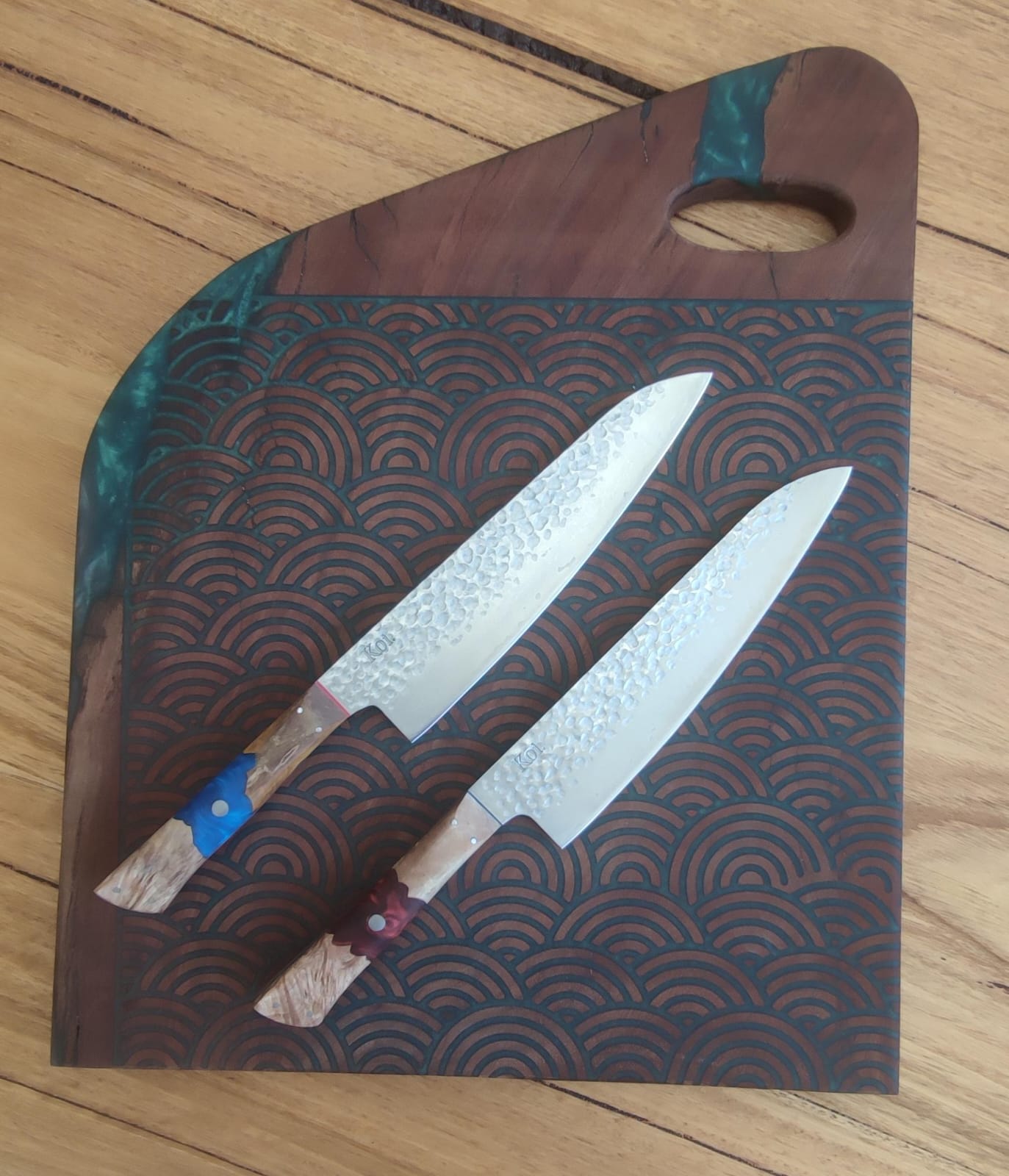Picture the effortless gliding of a knife through a ripe tomato or the precise slicing of a perfectly seared steak. Sharpness is just one aspect; the enduring quality matters equally.
As we delve into the science of edge retention, we'll uncover its pivotal role in enhancing your knife's performance over time.
From steel hardness to sharpening techniques and cutting surfaces, various factors come together to orchestrate the symphony of a long-lasting, sharp edge. Let's look at the intricacies that make your knife a precision instrument.
Steel Hardness and Edge Retention
When we delve into the world of knives, steel hardness becomes a pivotal concept. Put simply, it's a measure of how resistant the steel is to deformation. Think of it as the backbone of your knife - harder steel means less bending and a more robust blade.
Relationship between Steel Hardness and Edge Retention
Now, let's connect the dots. The hardness directly affects how well your blade retains its sharp edge. Harder steels generally hold an edge longer. Imagine your knife standing strong against the forces of wear and tear.
Not all steels are created equal. Each steel type has its unique hardness profile, influencing edge retention. For instance, high-carbon steels might demand more maintenance but reward with superior sharpness. On the flip side, stainless steels offer corrosion resistance but might be slightly softer. Understanding these nuances empowers you to choose a knife tailored to your needs—balancing edge retention with other desirable characteristics.
Sharpening Techniques for Prolonged Edge Retention
Maintaining the keen edge of your knife is not just a ritual; it's a science. Proper sharpening is the heartbeat of edge retention. Imagine a symphony where each note (or sharpening stroke) contributes to the masterpiece that is a long-lasting, razor-sharp blade.
I. Honing vs. Sharpening
Honing is like a tune-up for your knife, correcting minor misalignments in the edge. On the other hand, sharpening is the full orchestra, reshaping the blade to restore its sharpness. Both are vital, but understanding when to hone and when to sharpen is critical.
II. Angle Considerations
The angle at which you sharpen is the conductor's wand. It directs the precision of your sharpening efforts. Finding the sweet spot for your knife's angle ensures optimal sharpness. It's the nuance that transforms a blade from good to exceptional. This subtlety is what turns a blade from merely good to truly exceptional.
III. Water Stones vs. Diamond Stones
Choosing your sharpening stones is vital for the performance of your knives. Water stones offer a smooth, traditional melody, while diamond stones play a more contemporary, aggressive tune. Each has its place; the key is matching the stone to your skill and the knife's steel.
Cutting Surfaces and Their Influence
Now, let's delve into the very surface where the action happens – your cutting board. The type of cutting board you use plays a pivotal role in your knife's longevity. Hardwood boards, like maple or walnut, are kinder to your knife's edge compared to glass or ceramic. They absorb some impact, minimizing wear.
Surface Friction and Edge Wear
Contemplate the interaction between your knife and the cutting surface. Surface friction serves as a quiet culprit, leading to gradual wear over time. Softer materials provide a bit of 'give,' reducing this friction. The smoother the surface, the less resistance your knife encounters, preserving that razor-sharp edge.
Best Practices for Preserving Knife Edges
Here's the scoop: Choose softer, wooden cutting boards. Keep them tidy to avoid the build-up of debris, which can speed up wear and tear. And, for goodness sake, avoid the lure of glass boards! Consider this your backstage pass to the world of preserving your knife's edge – a small investment in cutting board wisdom that pays off big time.
Insights from Edge Retention Experiments
Steel hardness isn't the sole determinant, and factors like carbide structure and heat treatment significantly influence edge longevity. High-performance steels may excel in one aspect but prove less effective in real-world scenarios. These experiments underscore the critical role steel type plays in edge longevity. High-carbon steels exhibit remarkable sharpness, albeit with a trade-off in stain resistance. Stainless steels, conversely, strike a balance between durability and stain resistance, ideal for those seeking a low-maintenance blade.
What truly matters is how knives fare in your kitchen. Through real-world scenarios, we find that regular honing and avoiding excessive force during cutting significantly extend edge life. Optimal sharpening methods and understanding your knife’s steel composition empower you to make informed choices for a blade that endures the rigors of your culinary adventures.
Tips for Maintaining Long-Lasting Sharpness
Properly caring for your knives goes beyond sharpening; it involves strategic storage and meticulous cleaning.
A. Proper Storage Practices
When considering storage, the debate often boils down to magnetic strips versus knife blocks. Magnetic strips offer a sleek, space-efficient solution, showcasing your collection.
However, be cautious with high-end blades, as constant exposure may lead to scratching. Knife blocks, while offering protection, can sometimes trap moisture. Opt for well-ventilated blocks to mitigate this.
B. Cleaning and Drying Techniques
Your cleaning routine significantly impacts edge longevity. Residue build-up not only affects the taste of your ingredients but also accelerates edge wear. A gentle handwash with mild soap immediately after use is optimal. Avoid abrasive sponges and harsh detergents.
Equally crucial is thorough drying; moisture is the enemy of sharpness. Towel-dry meticulously, paying attention to the knife's handle and bolster areas.
Final Thoughts
For those seeking blades that endure, consider regular honing, master your sharpening method, and be mindful of cutting surfaces. Embrace the synergy of technique and tool. Nurture your investment through proper care, understanding that a well-maintained knife transcends culinary tasks—it becomes an extension of your passion.




